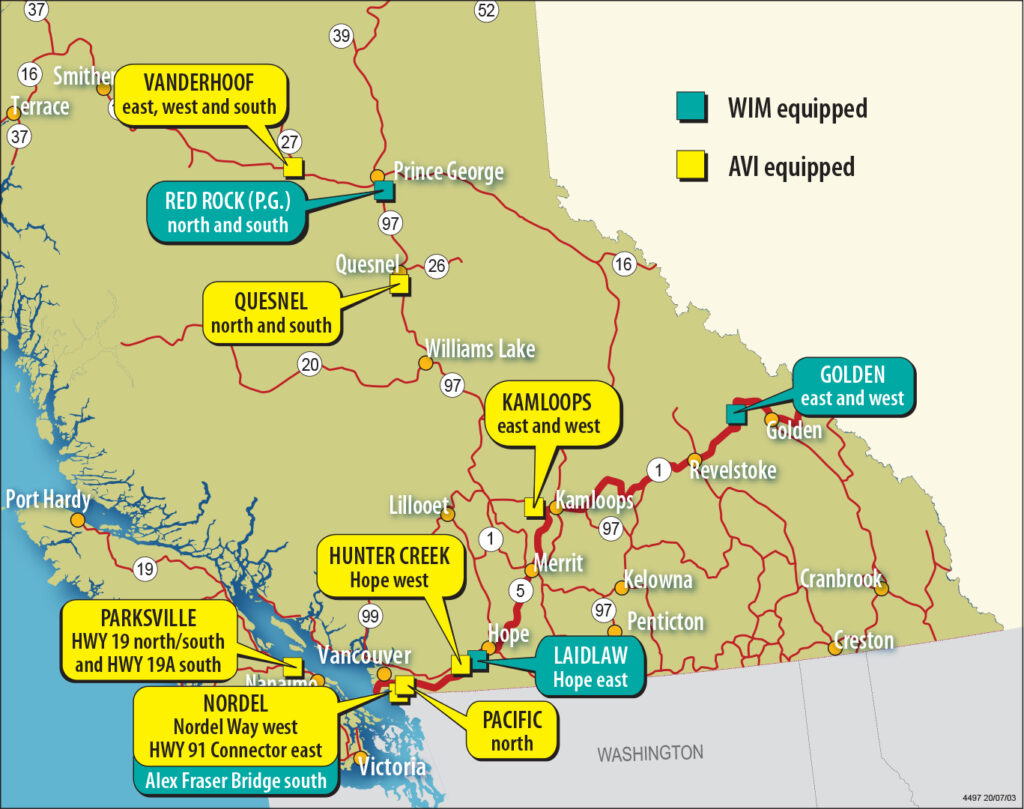
The above map shows an overview of all the BC weigh scale locations. You are free to share this map to whomever you’d like.
BC Weigh Scales Rules
A checkpoint along a highway known as the weigh station is put up for the purpose of inspecting vehicle weights and conducting vehicle inspections. These vehicles are limited to include commercial vehicles such as tractor trailers.
These stations are equipped with scales which are either weigh-in-motion and old-school scales which were used in the past require trucks to stop for the weighing to be done. A scale may vary from single axle to multi-axle. The weigh-in-motion stations check vehicles as they travel at moving speed on approaching the station.
If non-compliant, vehicles are signaled by red light on their transponder and must report to the station immediately. If the station is open and no light is signaled, you must report. If the station is closed, you can bypass the station.
In British Columbia, the weigh stations are on right side of the highway, with either median scales or the “weigh – in- motion” technology scales. They also conform to Transport Canada guidelines in collaboration with the Commercial Vehicle Safety and Enforcement.
The Commercial Vehicle Safety and Enforcement (CVSE) is entrusted with the task of ensuring that all commercial vehicles comply with the rules that govern scales on highways in British Columbia. It has also developed a stations guideline updated in April 2009 for both mobile and permanent weigh scales. Their main focus is weights, driver qualifications, permit conditions, mechanical fitness, dimensions, dangerous goods, moving violations and insurance.
CVSE Permitting
The most important rule requires that all commercial vehicles have a written permit specified by the Commercial Transport Fees Regulations. The permits may be offered for different purposes,these may include permits such as overload permission, oversize permit, temporary permit, non-resident trip permit and quarterly non resident commercial permit. Permits issued are issued for different reasons.
The overload permit is applied for which is only issued in cases where loads cannot be reduced or where the vehicle is not licensed up to it’s allowable width.
The second category permit is the oversize permit applied on irreducible loads. However, if this exceeds 4.4m a permit must be sought from Commercial Transport section (weight and dimensions).
The third option is the temporary permit that is available from the auto-plan outlets in British Columbia. The one who obtains this permit cannot operate the vehicle for 1-15days but is allowed for general use.
Fourth option is the non-resident single trip permit which is valid for 1 trip into and out of province for 30days. This permit can be obtained from inspection stations, appointment agents or government agents.
Fifth is the quarter non-resident commercial permit that is only valid for a period of 3 months for the purpose of transporting passenger and goods into, and about and out of the province. The fees paid on this permit is a quarter of the total fees paid by vehicles of the like weight. This is issued quarterly in January, April, July and October and terminated in March, June, September and December respectively.
Lastly, highway crossing permit that is issued to vehicles crossing a public highway from an industrial road also accompanied by an insurance coverage and crossing permit. In applying these permits the documents required include; registration and permits for all vehicles, logbook and pre-trip inspection report. After obtaining a permit then thereafter, the vehicle is allowed to move along the highways.
In the event where one is operating a commercial vehicle, the driver of a vehicle on a highway shall under an authorized officer
A) stop the vehicle at specified place in order that weighing of whole or part may be done using either stationary or portable scale. Measuring will be done on vehicle and load dimensions.
B) Stop if vehicle is suspected to be carrying unsafe material in order that the officer may fix the defect or secure the load.
C) Ensure that the load capacity is as required and comply with the provisions act, regulations or permit issued.
D) The vehicle shall comply to the road signs as directed. If directed to drive to weighing scale the operator shall be required to do so.
E) The driver is required to maintain a licensed gross weight not exceeding gross vehicle weight rating (GVWR) of 5,500 kg . This includes net weight of vehicle with accessories, weight of passengers, fuel and cargo(anything supported by the axle of the vehicle)
F) Officer who allow offensive drivers to break the rules shall be held liable on investigations and shall be prosecuted.
Concluding Information
In any case that the above is not applied the commercial vehicle will then be required to obtain a special exception permit and driver or operator is expected to ensure that that all conditions are met. In the event where the vehicle comply with all requirements then a “good-to-go” signal is communicated through the weigh2goBC network. In a case of the automatic vehicle identification type of stations, this must be reported every 24hours to maintain vehicle status.
In the case where one wants to tow a trailer weighing more than 4,600kg, one needs to apply for a house trailer endorsement or upgrade their license. A commercial vehicle with a licensed gross weight of 8,200kg will require a mandatory mechanical safety inspection annually. This is dependent on the type of vehicle and the weight it is licensed it. These vehicles are insured by Insurance Corporation of British Columbia (ICBC) under the National Safety Code(NSC).
However, during spring break-up, there are limitations put in place by the Ministry of Transport on overloads with a no overload on either 70 percent or 5 percent of legal axle loading on secondary highways.
For further information, contact the CVSE.
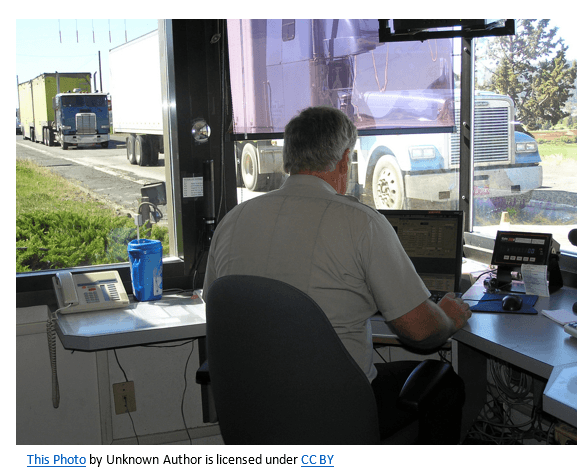
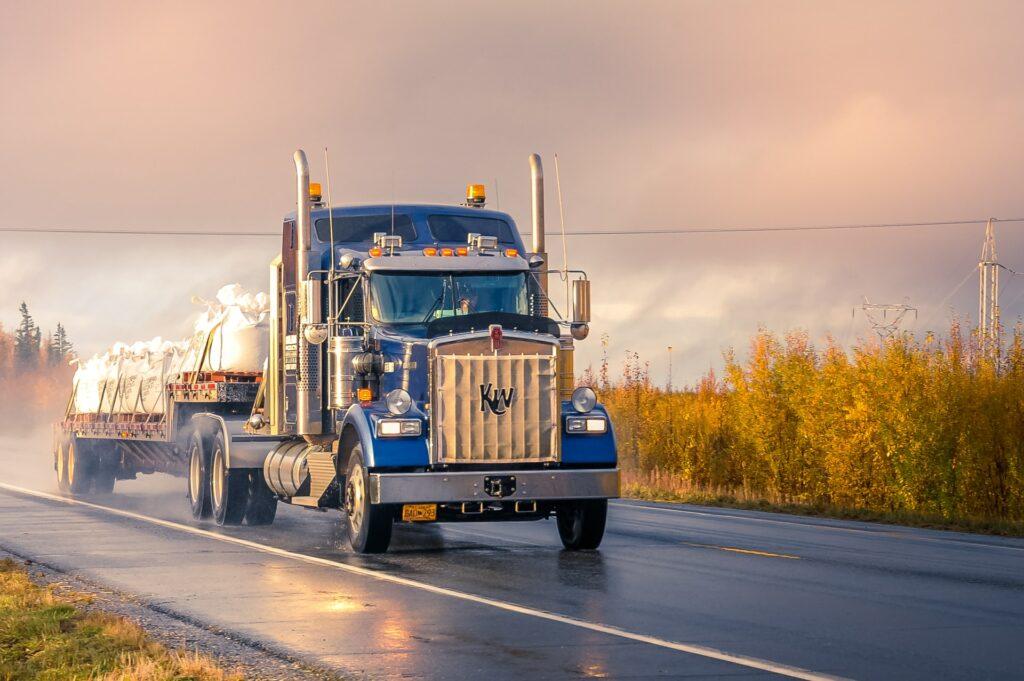
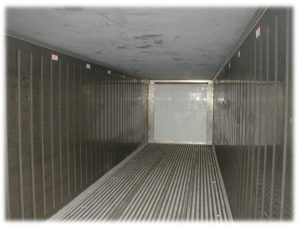
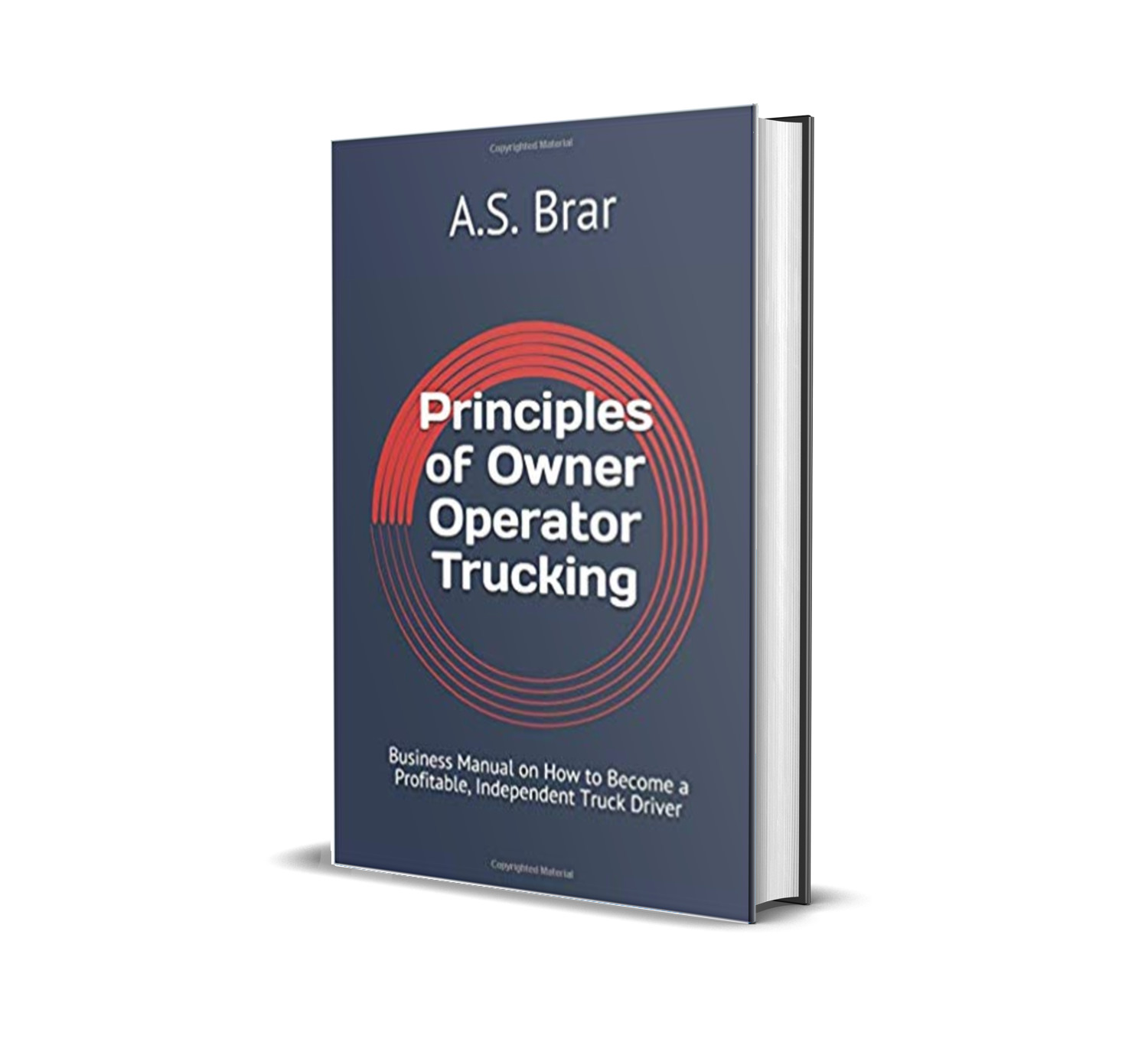
It should be noted on your website and Maps that the new weighscales being built in north west BC is in Thornhill 5 km east of Terrace. Thornhill is the fastest growing community between Prince George and Prince Rupert with a vibrant population of 5000+ people on the TransCanada highway. Thornhill was first settled in 1892 by Tom Thornhill and wife Eliza Wright 13 years before what is now know as Terrace was settled in 1905 across the Skeena River. Thornhill is the hub of the Northwest because all highways must pass through it to get to Terrace, Prince Rupert and Alaska , BC ferries going North. As well as heading south and east must go through Thornhill to get to Kitimat , Alaska Highway , Smithers and Prince George.